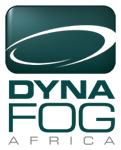 > About Fogging > About Fogging |
|
About Fogging |
| Most biologically active chemicals (herbicides, insecticides, fungicides, disinfectants and deodorizers) will give their best results if applied in small droplets between 10 and 100 microns in size, according to chemical type. However, droplets in this size range are highly susceptible to being drifted long distances by wind. This is why most outdoor agricultural spraying is done using droplets of 200 to 400 microns. Where wind drift is advantageous or in a closed building, smaller droplets can be utilized to maximize the efficacy of the chemical and reduce application costs. |
| |
 |
|
| Thermal Fog |
| |
A thermal fogger is a device that uses heat to produce a fog without degrading
the active ingredient.
A thermal fogger produces a range of droplet sizes including a large number of
very small droplets. This makes a thermal fogger the preferred type of
equipment to reach air spaces in areas highly obstructed by vegetation, or other
physical obstructions in buildings.
The large number of very small droplets, produced in a thermally generated fog,
also makes the fog highly visible. This can help the operator to monitor the fog
and ensure thoroughness of application. |
| |
| > See Thermal Fog Machines |
|
|
| |
| |
| Ultra-Low-Volume (ULV) Cold Fog |
| |
A ULV sprayer generates fog droplets by using a high volume of air at low pressure. Such a system enables droplets of a more precise size to be generated. The absence of a large number of very small droplets will limit the penetration of the fog into highly obstructed areas.
ULV sprayers can dispense formulations in a more concentrated form since less diluents is required. Also, the ability to be able to calibrate the machine to produce droplets of the optimum size, for the type of chemical being used, makes ULV spraying the method of choice whenever possible. |
| |
| > See ULV Cold Machines |
|
|
 |
|
| |
|



